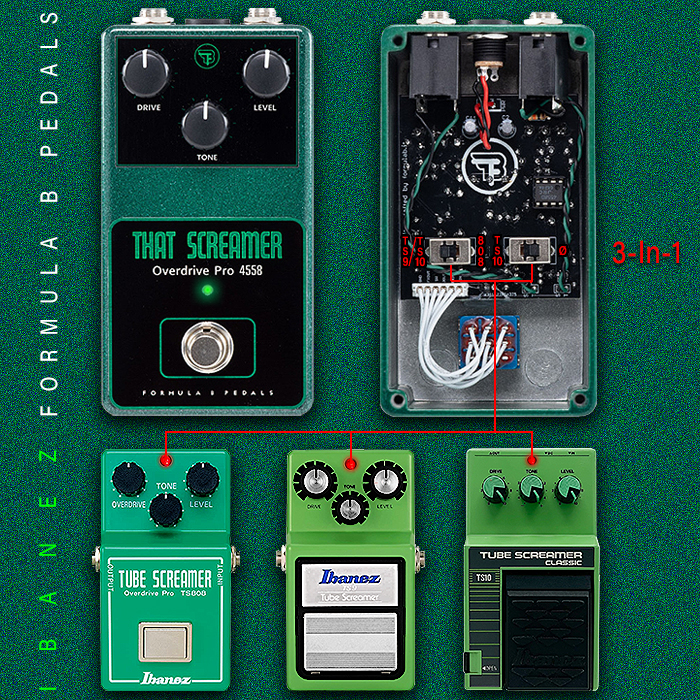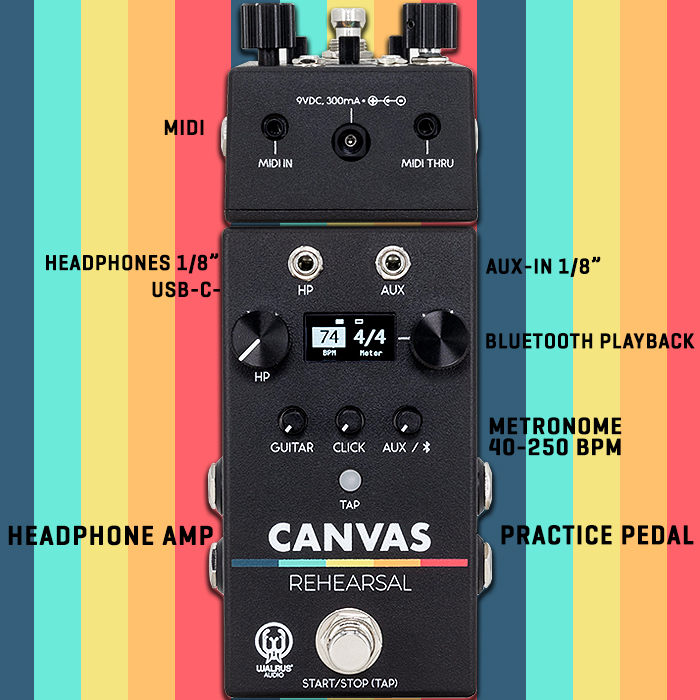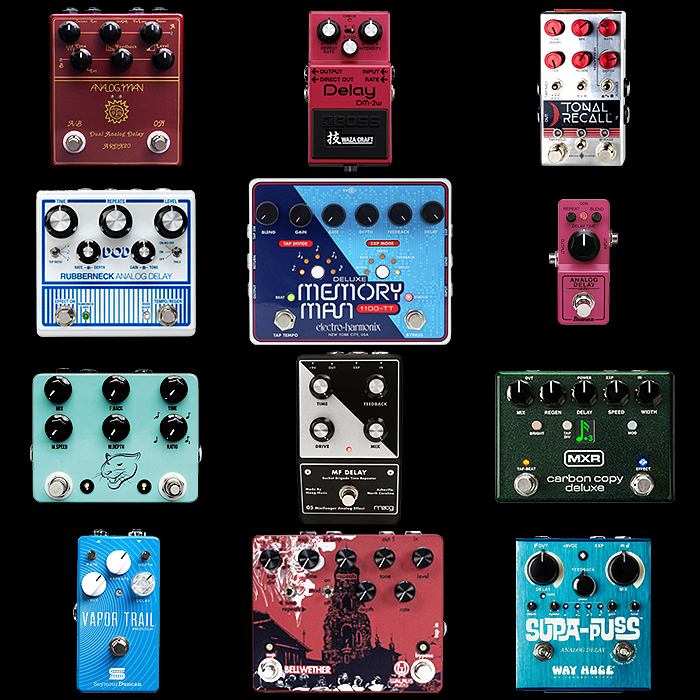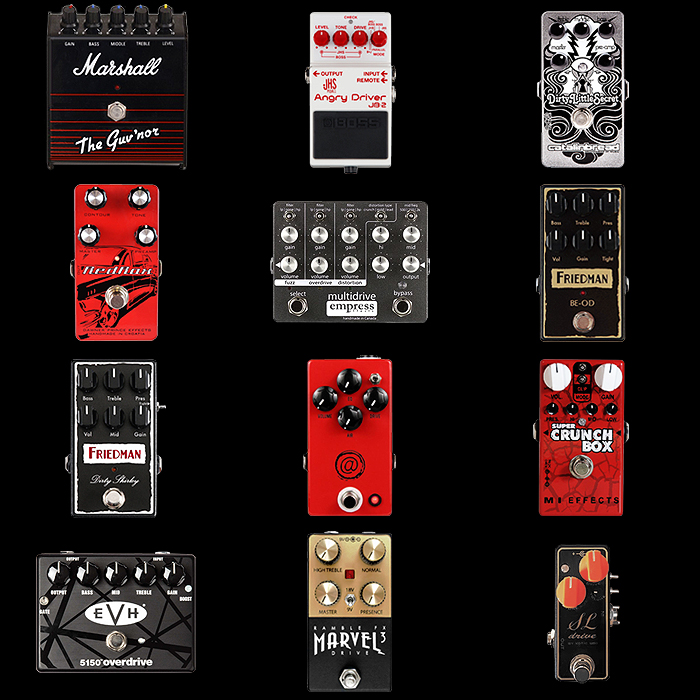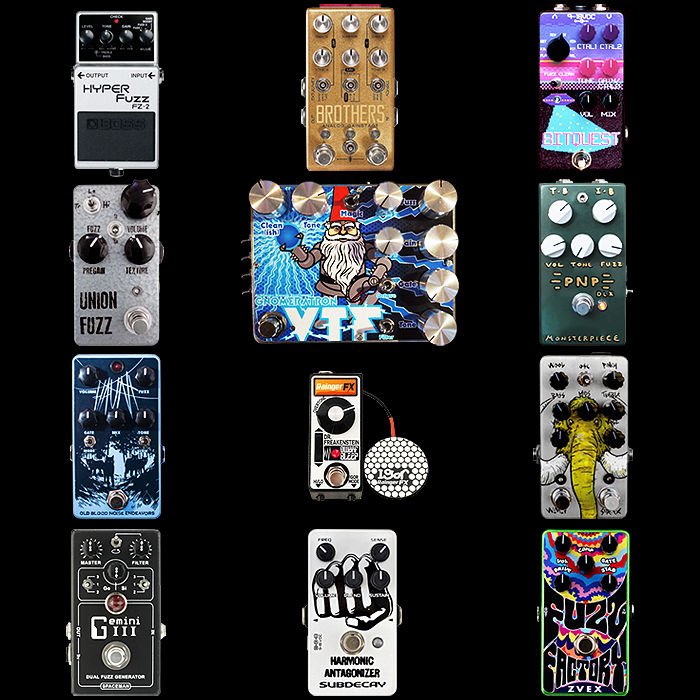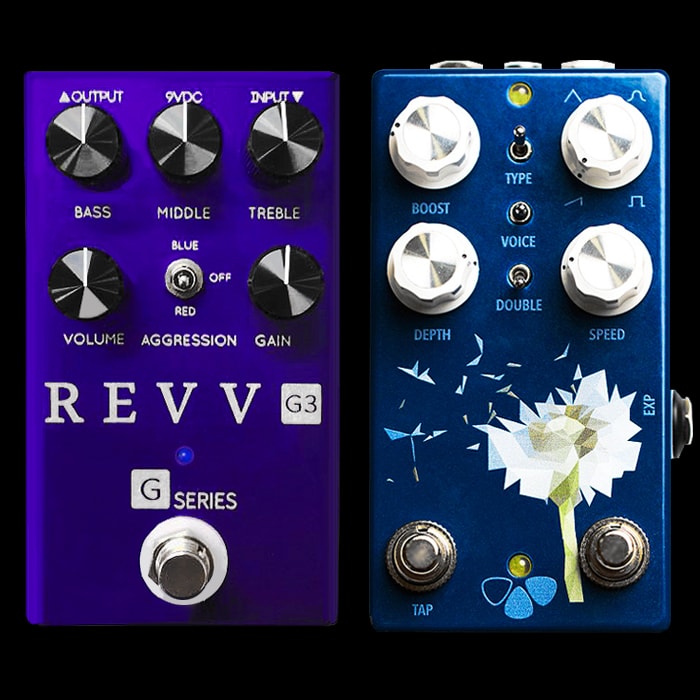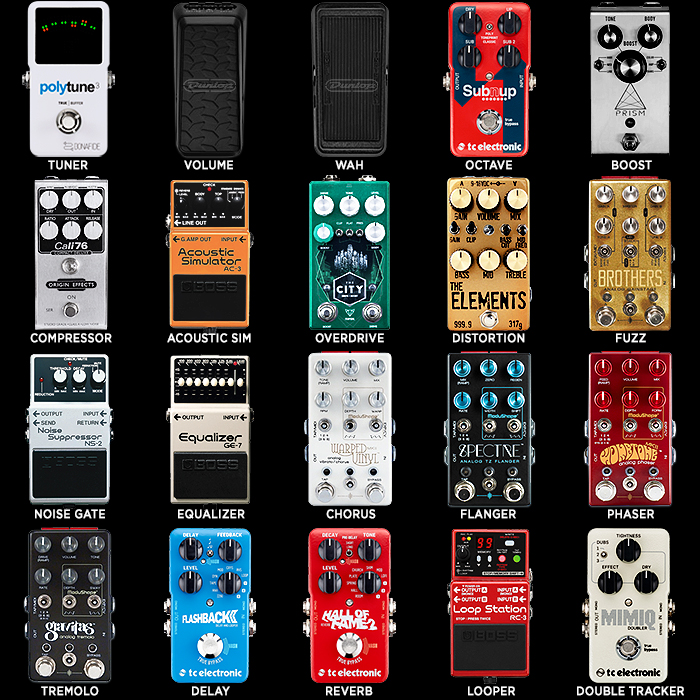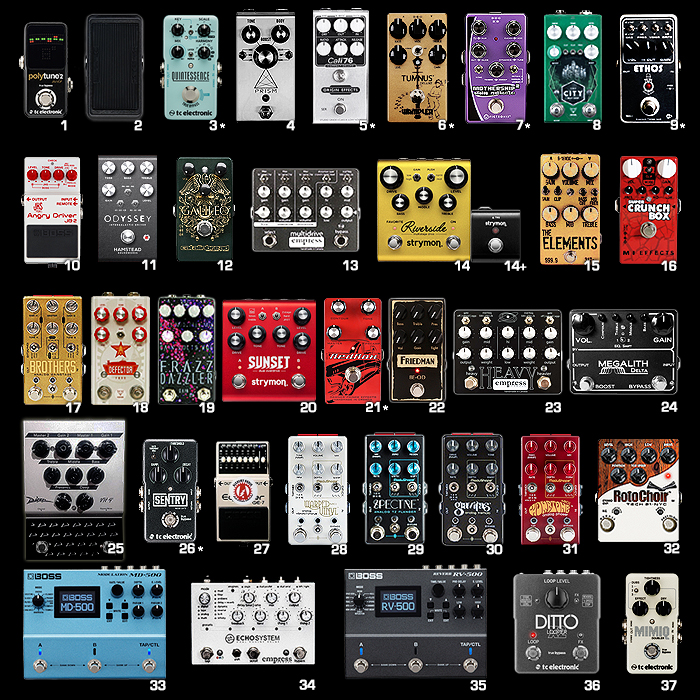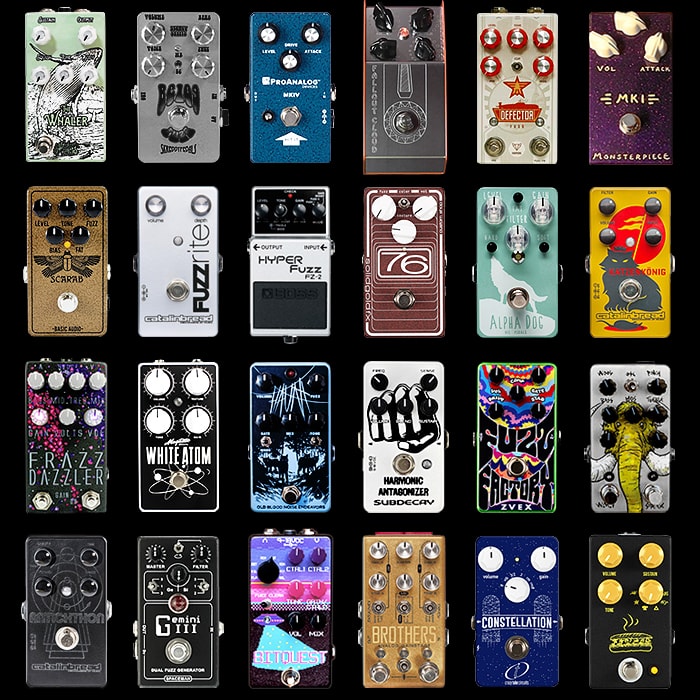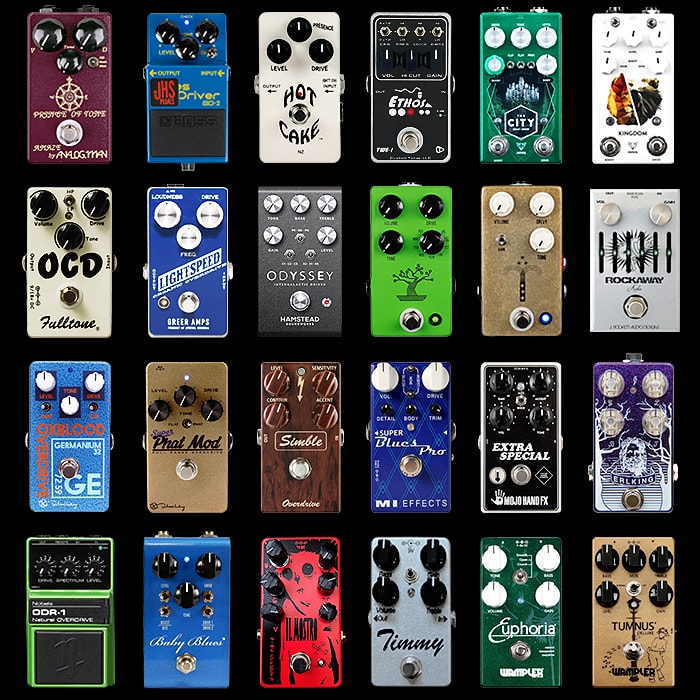20 of the Best Boss Compact Guitar Pedals for Your Consideration

Note - Updated and expanded version [here]
I checked out the Boss 40th Anniversary Exhibition on Saturday and attended Rabea’s workshop later in the afternoon at House of Vans, at the back and beyond of Waterloo Station; that overall event has now drawn to a close. I was a little late in deciding whether and when to go and so missed out on the ’That Pedal Show’ live experience earlier in the day. I was also a might peeved I did not get one of the commemorative pin badges they were handing out earlier, but the show was mostly a spectacular affair.
Boss totally revolutionised the Guitar Effects market in the same way that Sony did for tape and CD-players with its Walkman range. Before Roland / Boss launched the first trio of compact pedals in 1977, guitar pedals were large ponderously awkward objects. If you compare Boss’s core range that preceded the compact pedals, then the process of miniaturisation managed to reduce the pedals to around just 1/3 of their former size - or a circa 70% reduction.
At the exhibition, pretty much all of Roland / Boss’s guitar and bass -related history was laid out, including pretty much every device they every manufactured along some spectacular special and limited editions and memorabilia. The curation and display itself was magnificent, but I felt that the labelling could have been better (more details / backstory), I also thought there was a marked absence of merchandise. I would have loved to have acquired some commemorative items - say a fully up-to-date book of Boss Pedals and other special anniversary items - I think Boss kind of missed out on quite a few relevant areas here.
The Exhibition itself was great, as was Rabea’s workshop, even though it was running circa 30 minutes late and had to be cut short at the end - I managed to snatch a particularly decent spot in the auditorium.
119 Compact Pedals in 40 Years

The central display at the exhibition was really the 'Wall of Pedals' as pictured above. I spent the longest time perusing and contemplating on all the different varieties and variations, and speculating how some had to be withdrawn fairly early on, while others have managed to stay relevant for nearly 40 years. A great case in point is the GE-7 Equalizer which I use, and which was first introduced back in 1981.
Boss report that there are more than 50 types still available in their current range, some will be for bass, but it's nevertheless an impressive figure, as the fact that more than 15 million of these compact pedals have been sold since they were introduced back in 1977.
When I got back into guitar last year, I expected to be buying quite a lot of Boss, and that it would form quite a significant part of my pedal chain. Yet in those 40 years, lots of smart and innovative competitors have materialised to challenge Boss's still dominant position. In the compact pedal market Boss have always had to face off against MXR and DigiTech, but of late their biggest threat has been Danish upstart TC Electronic which has taken the compact pedal format to even more innovative heights. You also have Chase Bliss Audio doing some equally amazing things with the same enclosure size.
2017 Launched 40th Anniversary Compact Pedals

If you are feeling particularly flush with cash and nostalgic about the good old days, you can splash out £759 for the limited edition (1,500 sets) of the 40th Anniversary Compact Pedal Box Set - featuring near-as-dammit hand-made reproductions of the first 3 Boss Compact Pedals - the PH-1 Phaser, the OD-1 OverDrive and SP-1 Spectrum frequency enhancer.
I think this is fine for collectors and those with large disposable incomes - just to get a flavour of what it was that successfully launched Boss down this road. There is no doubt though that these are pricey, not necessarily quite silly-pricey, but kind of like 3 of the more expensive boutique ones - or £253 each.
I have quite wonderful Phaser and Overdrive pedals already in my collection and the Spectrum SP-1 is really just a novelty item relatively. I would not see any of these competing for space in my current pedal chain. So there is probably little practical value as such. As a piece of history or an investment though probably more worthwhile.
In my current mindstate, I am not really considering these at all, I much prefer the look of the new Angry Driver JB-2 and Special Edition black Distortion DS-1 also released in conjunction with the 40th Anniversary. The JB-2 for sure will go straight into the my chain, while the DS-1 would be a decent swap out for sake of mixing things up and finding inspiration in alternative paths.
I've mulled over all of Boss's pedals - past and current - some I've already mentioned in my pedal overview articles and a few will appear in forthcoming pieces I've already prepared. Out of the 119 pedals, I find that there are 20 particularly to my liking, of those, probably around half a dozen I might wish to acquire as set out below.
Pedals are listed by name, rather than short-hand Boss reference designation:
'63 Fender Reverb FRV-1 (since 2009) - £115
This pedal will appear in my forthcoming article on Spring Reverb pedals, the FRV-1 has found favour with a lot of 60's surf-rock enthusiasts, and is most definitely one of the main ones for consideration - if you are looking for that vintage Fender amp spring-tank reverb sound - then this gets you very close.
Analog Delay DM-2w (since 2014) - £149
Boss re-launched modern updates of a number of its more celebrated vintage compact pedals, including the much loved DM-2 Analog Delay back in 2014. The Waza designation means it covers very high-spec Boss lab recreations where components are sourced as close to the originals as is achievable. This pedal will also be featured in my forthcoming piece on Analogue Delays.
Angry Driver JB-2 (New for 2017) (Blues Driver BD-2w) - £179
Of all the recent Boss Compact Pedal releases, this one has me the most excited. I could have included the celebrated Boss Blues Driver in its Waza incarnation or BD-2w, but the JB-2 Angry Driver goes one better by doubling up the Boss Blues Driver circuit with the JHS Angry Charlie one - allowing you to play each individually or in parallel or series. One of my favourite long-time pedals is the Mooer Blues Mood, which is a miniaturisation of the Keeley-modded Boss Blues Driver. With the Angry Driver you get both circuits in one, giving you an amazing tonal pallet, and thus unseating my well-loved Blues Mood.
Chorus CE-2w (Since 2016) - £189
Boss ruled the 80's with its chorus pedals, this recreation of the original compact Chorus Ensemble - now in Waza form with the added benefit of spacey Stereo output. I am slightly less interested in this than I should be since the new Boss MD-500 Modulation workstation does such a wonderful job with Choruses. It was an area of my Strymon Mobius that I did not use particularly much, but the Boss and Roland Choruses have always been stellar - and sound amazing on the larger MD-500 pedal.
Chromatic Tuner TU-3 (Since 2010) - £65
The Boss Tuner has been in its current format since 2010 and still finds favour on a very significant number of pro pedalboards. Last year also saw a release of an all-black Waza version of this (TU-3w) which I mark down a smidge for its slight drop in clarity and legibility - at least to my eyes. The TU-3 is a clear and accurate tuner, personally I prefer the TCE PolyTune Mini which is smaller and can give you a reading on all 6 strings simultaneously. The TU-3 is likely more accurate though - and is also available in a shorter sort of screen-only version - the TU-3S.
Compressor CP-1X (Since 2016) - £125
When I was in the midst of constructing the core of my pedal-chain last year, this was for a while the front-runner for Compressor, yet its delayed release / lack of initial availability forced me to look elsewhere, first to the Mini Xotic SP Compressor, and then latterly to my now current Wampler Mini Ego. I find I prefer the mini pedal-size for this function, and there are lots of really decent Compressor pedals around now - including ones from Keeley and Origin Effects, which the professionals largely seem to prefer. The CP-1X is no doubt still in the running, but just missed out on a mention in my 9 Best Compressor Pedals article.
Digital Delay DD-7 (Since 2008) - £135
I was surprised to see that this pedal was quite so old. It's a really decent delay pedal for sure, particularly considering its size, yet just missed out on my Delay Workstation overview - where it was pipped by the new TC Electronic Flashback 2. Boss' larger DD-500 workstation was featured though and is one of the preferred selections. I'm hoping that the forthcoming firmware updates bring it more up to spec with the slightly more impressive MD-500 and RV-500. For the DD-7 though to have tap-delay, subdivisions, modulation and 3 seconds of delay in this form factor and back in 2008 is pretty cool. It is fairly evident though that the TC Electronic Flashback has somewhat outpaced it more recently - perhaps the DD-8 is just around the corner.
Distortion DS-1 (black) (New for 2017) - £58
This is such a good buy - the 40th Anniversary one in its limited black livery. There seem to be many out there who don't like the sound of this pedal - sure there are more powerful modern distortions available, but I quite like the tone and timbre of this one. It's not likely to be my first choice of distortion, but it's great for when I want this particular flavour. For £58 this is also a much less painful way to commemorate Boss's Compact Pedals' 40th Anniversary - I already have a DS-1X, and will definitely be adding one of these at some stage.
Dual OverDrive SD-2 (1993 Discontinued) - c£100 used
When I first saw the JB-2 Angry Driver, I thought its dual-concentric dial layout looked familiar, and here is where it was first used. In fact one of the few times you had 3 dual-concentric pots on a Boss pedal. This is nowhere near as handy as the Angry Driver though as all the modes are separate - one or the other, or the ability to stomp between the two. Possibly a little modding here would allow you to stack them which would make it a touch more usable. Many find the 'Crunch' mode a little thin - I think it really depends on your setup, guitar, pickups etc. - probably better for humbuckers. There are a number of these on Reverb (second-hand) with the best examples going for about £100. I may well get one of these just for the fun of it.
Dynamic Wah AW-3 (Since 2000) - £99
This pedal featured in my piece on Wah + Auto Wah pedals, and is a good option against the Maxon Auto Filter and Mad Professor Snow White Auto Wah. Depending on exactly what effect you are after, the Boss easily gives you the best bang for you buck. If you're just looking for a straight up Auto Wah you may prefer the AW-2 or other similar more-streamlined filter types.
Graphic Equalizer GE-7 (Since 1981) - £79
Still the industry-standard pedalboard EQ, when I read up on the history I cannot believe it goes all the way back to 1981 in this exact format. No doubt the internals have changed several times over that period, meaning I have both a recent original, as well as an Alchemy Modded version which switches out the key components with premium replacements for less unwanted noise and better tone. I've considered the Source Audio Programmable EQ and various parametric ones, but still think I like this one the best - it is clear, instant and consistent - it always works.
Harmonist PS-6 (Since 2010) - £128
This was featured in my piece on Double Tracking, but obviously does a lot more in the realm of Pitch-Shifting and Harmonising. This is a vastly under-rated and somewhat under-the-radar pedal with lots of smart uses. I have long considered getting myself one of these, it keeps getting bumped by more pressing priorities, but I think one of these will find its way home before long.
Loop Station RC-3 (Since 2011) - £125
For my piece on Stereo Loopers I went with the RC-3's bigger brother - the RC-30 as I like having at least two switches on my loopers for easier control - versus multi-multi tapping a single one as in this case. Otherwise for this form factor, this is probably still the industry standard - for Mini I think the TC Electronic owns it, also probably for up a level - yet at the regular enclosure level it's between either this one or the regular DigiTech JamMan.
Metal Zone MT-2 (Since 1991) - £89
Much like the DS-1 this can be a real Marmite kind of pedal which has almost as many haters as fans. I will admit that I was initially put off this one by the amount of negative comments online - yet those seem to be mostly trolls now. This is a Boss pedal that's been on my wishlist for a while, still not got round to getting it yet, but will undoubtedly do so one of these days. If you watch the recent Heavy Metal pedal shootout on Andertons you can hear just how good this pedal still sounds. I don't think it will unseat my existing heavy distortions, but it will make a nice alternative for occasional swap-out.
Noise Suppressor NS-2 (Since 1987) - £79
Much like the GE-7 above, this had been another staple in my chain, and in the same way I have an Alchemy Modded version with better internal components. You can read more in my piece on Noise Gates - I tried to swap this out for an ISP Decimator G-String at one stage, but that just wasn't the same - this is still my Noise Gate of choice, I may still at some stage A/B it with the TCE Sentry, but I am really totally satisfied as it is, so that is likely to be a long way off. This is a great solid workhorse pedal which just does what it's supposed to does it really well.
OverDrive OD-1X (Since 2014) - £125
Some may find I've overdosed a little here on Boss Overdrives - featuring the SD-2, OD-1X and SD-1w. Bizarrely even though the latter two came out in the same year they all sound quite distinctly different. You should also not forget that it was 'Boss' who first coined the word/phrase 'OverDrive' in this context - and which is now just plain old overdrive in standard parlance and tagged to the most diverse number of dirt pedals, transparent and otherwise. The OD-1X uses Boss's new-fangled (-ish) real-time 'Multi-Dimensional Processing' (MDP) - which effectively and ongoingly tunes the output based on any and every tiny change to the incoming signal - which means it's really very dynamic! I have the DS-1X already, when I think I meant to get the OD-1X, this is still on my wishlist and will be acquired eventually - possibly when it drops a little nearer to the £100 mark.
Reverb RV-6 (Since 2015) - £129
When I did my piece on Reverb Workstations I focused on this one's bigger brother the RV-500, which is currently my main and core Reverb pedal of choice, having fairly recently bumped the Strymon BigSky. For the regular (compact) enclosure size I think this one is only really pipped by TC Electronic's new Hall of Fame 2 which has a 'MASH'-enabled footswitch, TonePrint abilities and a few more algorithms. On any give day the RV-6 can quite easily compete with the Neunaber Immerse, DigiTech Polara and MXR M300. I find that occasionally Boss's slightly more old-fashioned hinge-type footswitch can make the Boss pedals look a little out-of-date, while the more old-school enclosure is usually a touch more robust and often disguises some really neat and modern innovation.
Super Octave OC-3 (Since 2003) - £105
This was included in my piece on Octave Pedals where it competes well within the regular enclosure form-factor, although I went for the TC Electronic Sub 'N' Up which gives me one additional octave (3) and the addition of TonePrint for more POG-style barrel-organ effects etc. There's still lots of pros that favour the OC-3, where alongside EHX's Pog it's probably still the preferred choice for this kind of effect - and John Mayer loves it.
Super OverDrive SD-1w (Since 2014) - £129
As mentioned, this was released in the same year as the OD-1X, but has a slightly different flavour - with a Standard | Custom toggle - which when set to the latter gives you a significant boost in gain. This is a really nicely tuned mid-gain pedal, which like many of these Boss products sometimes seems to have almost as many detractors as it has fans. I think it sound great, there may be other overdrives out there more to your liking for sure, and this one may not displace any of my existing favourites - but it's its own kind of thing.
Tera Echo TE-2 (Since 2013) - £139
This pedal is due to feature in my piece on stand-alone digital delays (as distinct from delay workstations). It was launched with much fanfare back in 2013 with a lovely spacey stereo modulation. Yet never seems to have got the traction it should have done. It's one of the reasons for getting the DD-500, which I currently can't see getting by my preferred choice of Empress's EchoSystem. It uses the clever Multi-Dimensional Processing (MDP) algorithm to dynamically swirl delay and reverb together in really smart spacey combinations. If my Empress stays on as my preferred choice of Delay Workstation, I may just have to get this one as an add-on for my chain - it truly sounds lush.
Final Thoughts
I think Boss - the originator of the 'Compact Pedal' format (which I now call the Regular-Size Enclosure) has made some incredible pedals over the years and still continues to bring out the occasional must-have. I do though also feel that Boss has lost some ground to more innovative pedal-makers like TC Electronic and Chase Bliss Audio - who do even more clever things with the same size of enclosure. Also for Boss to keep using its latched-plate-switch, it limits what its pedals can do versus the two footswitch buttons you now see on an increasing number of regular-size pedal enclosures. There's no doubt the new Angry Driver pedal is really smart, but it would have been even smarter with two footswitches where one could be the on/off and the other the A/B or A/Both etc.
Boss has made great leaps with its 500 series to fend off the likes of Strymon, but its Compact Pedal series original format is now lagging somewhat behind the leading edge of current innovation...
Addition! - Boss FZ-2 Hyper Fuzz (1993 - Discontinued) - c£200+
I unfortunately overlooked this great Boss Fuzz pedal on all my various sweeps. Boss is rarely associated with Fuzz, but this is one sweet fuzz pedal - with 3 different voicings and separate Treble and Bass controls. Second hand versions of these can be found on Reverb.com typically in excess of £200 which shows you just how much some people value these at. Possibly it's time Boss reissued this one too!
Addition 2 - Boss BF-2 Flanger (1981-2001) - c£100 (Reverb.com)
Andy Martin's fairly recent vintage pick review (above) reminded me how good this original flanger was. I saw Johnny Balmer of Alchemy Audio was offering one of his upgraded specials and I was quick to snap it up. This flanger sounds tremendous all-round and is one that many others are modelled on, and that many professionals still use this day. I have 4 key flangers now that I alternate - the A/DA PBF, Chase Bliss Audio Spectre, TC Electronic JP Dreamscape, and this one - all are excellent.











